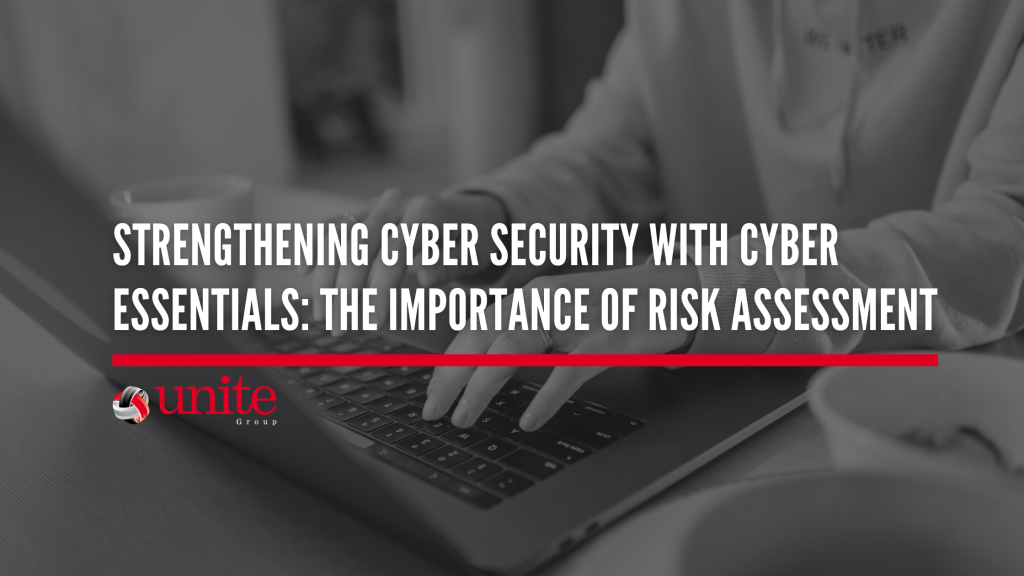
Cyber threats are a constant and evolving risk for businesses of all sizes. With cyber-attacks becoming increasingly sophisticated and widespread, organisations must prioritise cyber security measures to protect their sensitive data and infrastructure. One essential component of a robust cyber security strategy is conducting regular risk assessments.
In this blog, we’ll explore the significance of risk assessment in the context of Cyber Essentials – a government-backed certification scheme designed to help businesses guard against common cyber threats.
Understanding Cyber Essentials:
Cyber Essentials is a cyber security certification scheme developed by the UK government to assist organisations in implementing essential security controls and mitigating the risk of cyber attacks. The scheme provides a set of guidelines and best practices that businesses can follow to secure their digital infrastructure and protect against cyber threats. By achieving Cyber Essentials certification, organisations demonstrate their commitment to cyber security and reassure customers, partners, and stakeholders of their dedication to protecting sensitive information.
The Role of Risk Assessment:
Risk assessment plays a crucial role in the Cyber Essentials certification process. Before implementing the security controls outlined in Cyber Essentials, organisations must first conduct a thorough risk assessment to identify potential vulnerabilities and threats to their digital assets. By assessing their current security posture and understanding their risk landscape, organisations can prioritise their cyber security efforts and allocate resources effectively to mitigate the most significant risks.
Identifying Potential Threats:
During the risk assessment phase of Cyber Essentials certification, organisations evaluate their IT systems and networks to identify potential threats and vulnerabilities. This involves assessing factors such as network configuration, access controls, software vulnerabilities, and user privileges. By identifying potential threats early on, organisations can take proactive measures to address them before they can be exploited by malicious actors.
Assessing Impact and Likelihood:
In addition to identifying potential threats, risk assessment involves evaluating the impact and likelihood of these threats occurring. Organisations assess the potential impact of a cyber attack on their business operations, financial resources, reputation, and compliance obligations. They also consider the likelihood of each threat occurring based on factors. Such as historical data, industry trends, and emerging threats. By quantifying the impact and likelihood of potential threats, organisations can prioritise their risk mitigation efforts. And focus on addressing the most significant risks first.
Implementing Risk Mitigation Measures:
Based on the findings of the risk assessment, organisations develop and implement risk mitigation measures to address identified vulnerabilities and threats. This may involve implementing the security controls outlined in Cyber Essentials. Such as secure configuration, access control, malware protection, patch management, and firewalls. Additionally, organisations may implement additional security measures tailored to their specific risk profile and business requirements.
Continuous Monitoring and Review:
Risk assessment is not a one-time exercise but rather an ongoing process that requires continuous monitoring and review. As the cyber security landscape evolves and new threats emerge, organisations must regularly reassess their risk posture and adjust their security measures accordingly. By staying vigilant and proactive, organisations can effectively mitigate cyber risks and maintain their Cyber Essentials certification over time.
Conclusion: Prioritising Risk Assessment in Cyber Security
Risk assessment is a critical component of cyber security and plays a vital role in the Cyber Essentials certification process. By conducting thorough risk assessments, organisations can identify potential vulnerabilities and threats to their digital assets. Prioritise their cyber security efforts, and implement effective risk mitigation measures. With Cyber Essentials certification, organisations demonstrate their commitment to cyber security best practices. As well as. reassuring customers, partners, and stakeholders of their dedication to protecting sensitive information. By prioritising risk assessment and cyber security, organisations can strengthen their resilience to cyber threats and safeguard their digital assets against evolving risks.
Contact us today to begin the process of gaining a Cyber Essentials certification.
